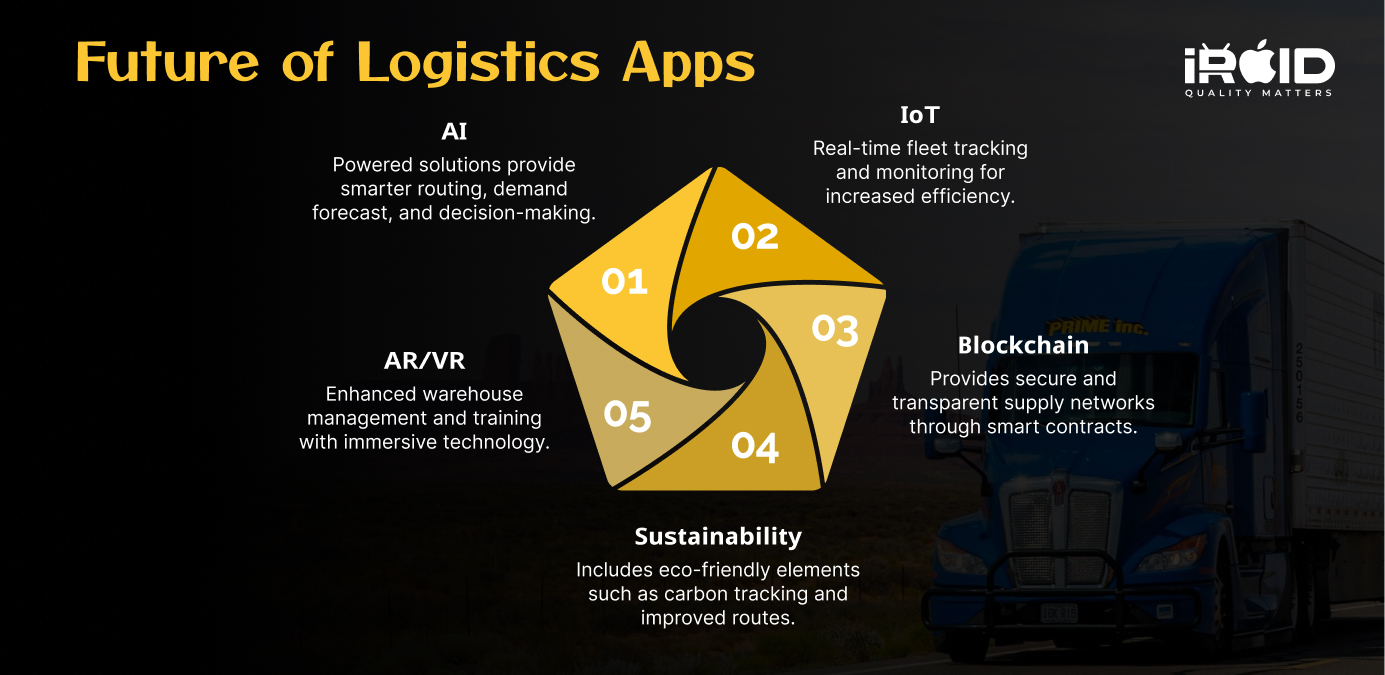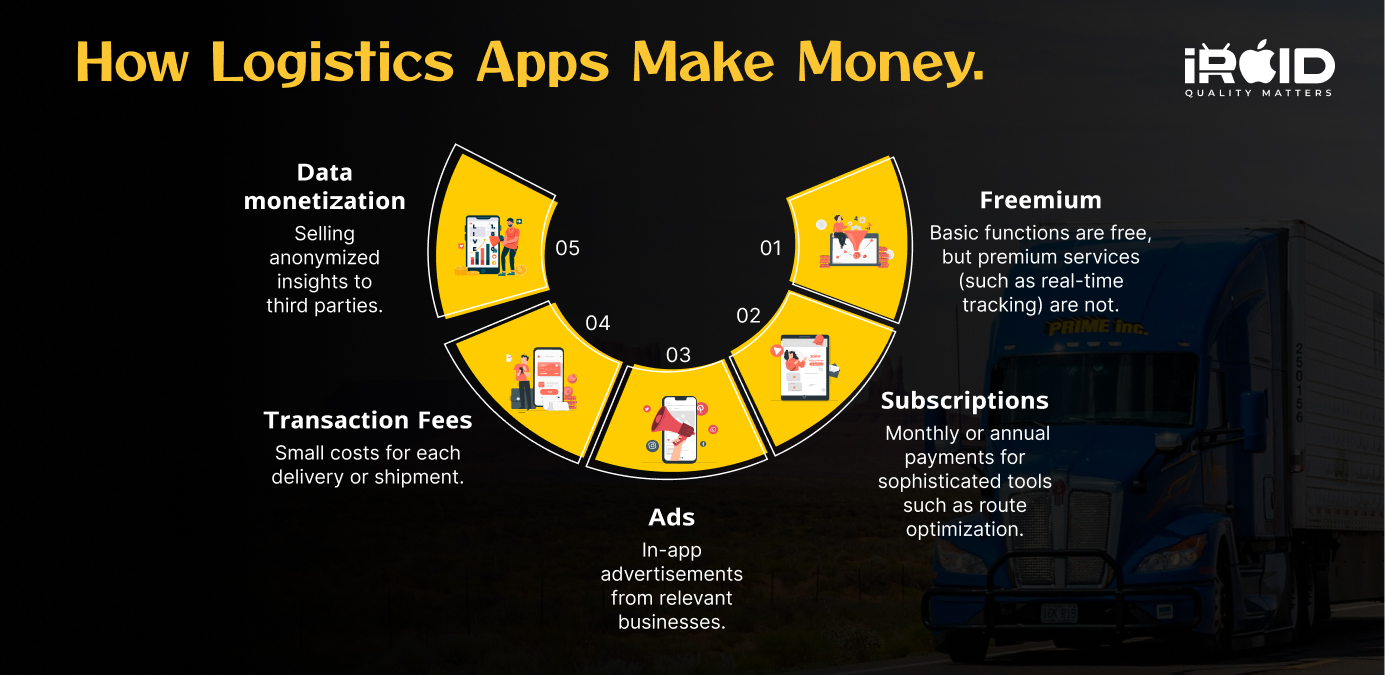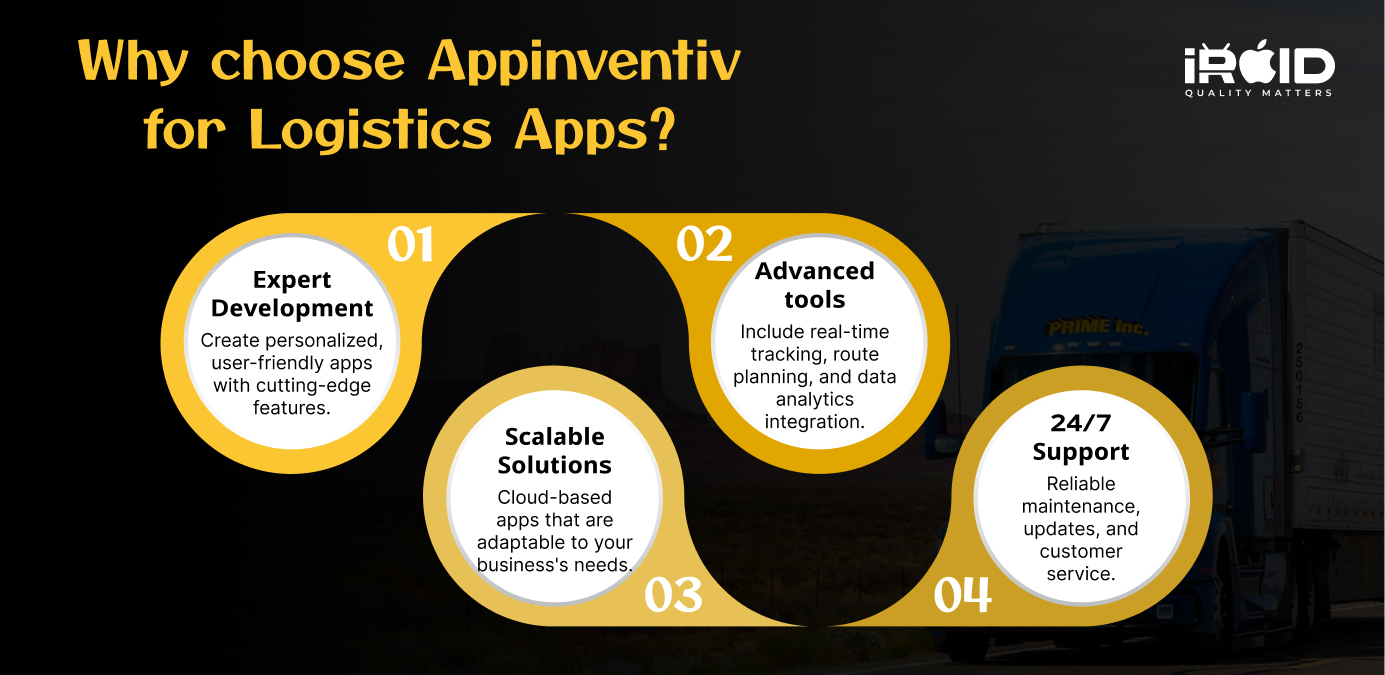Introduction
Recent years have seen the logistics industry as a major pillar for digital transformation, as disruptive technologies have redefined how companies maintain their supply chains. Logistics apps play a vital role in optimizing operational efficiency, simplifying processes, and refining the customer experience in this era of digitalization. This blog will explore the approximate expenses when building a logistics app as well as the aspects of development costs impacting factors, revenue generation, and Trends.
Section 1: Understanding Logistics Apps
• Logistics apps are software applications that are developed and created to ease and improve the different sections of the supply chain. Apps of this type usually include the functions you find in inventory tracking, route optimization, shipment monitoring, and real-time communication.
• Logistics apps are essential means for visibility, transparencies and some type of efficiency in the whole logistics process in modern supply chains. As a result, they enable businesses to run more efficiently and make informed decisions by providing real-time data insights and automating manual tasks.
• Logistics apps come in various types designed for task-specific purposes, such as fleet management apps, warehouse management apps, on-demand logistics services apps, and more for seamless operations.
Section 2: Factors Influencing Development Costs
• App Complexity: The complexity of the logistics app, whether it is simple with basic features or complex with advanced functionalities, directly affects the development cost.
• App Development Platform: Developing an app for iOS, Android, or both can influence costs because of platform-specific needs.
• App Customization: Higher customization and branding elements increase the development costs.
• Integration: Bi your app also needs to be integrated with your existing systems like ERP and CRM systems that may cost you additional.
• Compliance & Data Security: Compliance with regulations and ensuring the security of the data can drive additional costs of development and further develop the application.
• Maintenance and Updates: Funding ongoing development and maintenance, including monitoring and updating the app for long-term viability.
• Development Team: The experience and location of the development team can lead to varying costs; leading companies tend to charge higher fees.
• Marketing and Promotion: Pricing some of the app's activities to increase brand recognition and user acquisition is essential for the success of the app.
Section 3: Estimated Cost Breakdown
Building a Simple Logistics App may cost $5,000 to $35,000, Medium app pockets money between $35,000 to 60,000. More advanced features may push complex logistics apps into the tens of thousands of dollars, $60,000 and higher.
Section 4: Additional Costs to Consider
Outside of development costs, businesses need to factor in the costs of app design, testing, QA, app store fees, server fees and marketing costs.
Section 5: Cost-Saving Strategies
Companies can make use of content management systems, open-source libraries, and outsource development to minimize the cost of development to cost-effective teams and prioritize features for a minimum viable product (MVP) approach.
Section 6: Measuring ROI and Long-Term Value
October 2023 — How to build a logistics app that balance cost and competitive advantage This implies, investing in a high-quality logistics app can result in long-term benefits or competitive advantages.
What are the monetization strategies employed by logistics mobile apps to generate revenue?
Freemium Model
• Description: Freemium -- basic services are provided free of charge, but users pay a premium for advanced features.
• Example: A basic logistics app might offer users basic shipment tracking without charge but make them pay for real-time monitoring, or analytics.
• Importance: This strategy attracts a large user base with the option to upsell premium services.
Subscription Services
• Description: Subscription plans grant users periodic access to special features for a recurring fee.
• Example: For example, a logistics app could provide unlimited tracking, route optimization, or customer support for a monthly or yearly subscription.
• Importance: This model is allowing for continual revenue from committed clients.
In-App Advertising
• Description: In-app ads is when you display ads inside the app for generating revenue.
• Example: For example; a logistics app can have banner ads, video ads, or sponsored content from relevant brands.
• Importance: This strategy uses the app's user base to draw advertisers and monetize app traffic.
Transaction Fees
• Description: Transaction fees involve charging a percentage of each transaction facilitated through the app.
• Example: A logistics app may charge a small fee for every successful delivery or shipment booked through the platform.
• Importance: This strategy directly ties revenue generation to the app's usage and transaction volume.
Data Monetization
• Description: Data monetization involves selling anonymized user data or insights to third parties.
• Example: A logistics app may aggregate shipment data to provide industry trends or market analysis to logistics companies.
• Importance: This strategy diversifies revenue streams and leverages valuable data assets.
Discuss the Anticipated Trends and Advancements in the Realm of Logistics App Development

Anticipated Trends and Advancements
1. Integration of Artificial Intelligence (AI)
• AI has the potential to revolutionize logistics app development by optimizing route planning, predicting demand, and enhancing decision-making processes.
• Examples like AI-powered chatbots for customer service and predictive analytics for warehouse management showcase the diverse applications of AI in this sector.
2. Internet of Things (IoT) Connectivity
• The IoT enables real-time tracking of shipments, monitoring of fleet performance, and optimization of supply chain processes.
• Advancements in IoT sensors and devices will continue to drive efficiency and transparency in logistics operations.
3. Blockchain Implementation
• Blockchain technology offers increased security, transparency, and traceability in logistics. Smart contracts can automate processes like payment settlements and document verification.
• Companies are exploring blockchain solutions to streamline supply chain management and reduce fraud risks.
4. Sustainability Focus
• With the growing emphasis on sustainability, logistics apps are expected to incorporate features that promote eco-friendly practices.
• Features like carbon footprint tracking, alternative fuel optimization, and eco-routing algorithms will enable companies to operate in a more environmentally conscious manner.
5. Augmented Reality (AR) and Virtual Reality (VR) Integration
• AR and VR technologies are enhancing warehouse management, order-picking processes, and training protocols in logistics.
• The immersive nature of AR and VR can improve operational accuracy and efficiency, leading to better customer satisfaction and reduced errors.
In what ways can Appinventiv assist in the creation and enhancement of on-demand logistics applications?
Expertise in App Development
• Appinventiv boasts a team of experienced developers proficient in creating customized on-demand logistics applications tailored to the unique requirements of each client.
• The developers at Appinventiv stay updated with the latest trends and technologies to ensure that the applications they create are cutting-edge and efficient.
• With a focus on user experience design, Appinventiv ensures that the applications are intuitive and easy to use for both logistics professionals and end customers.
Integration of Advanced Features
• Appinventiv excels in integrating advanced features such as real-time tracking, route optimization, and inventory management into on-demand logistics applications.
• By incorporating features like geofencing and push notifications, Appinventiv enhances the efficiency of logistics operations and provides real-time updates to customers.
• The use of data analytics and machine learning algorithms further improves the accuracy and effectiveness of on-demand logistics applications developed by Appinventiv.
Scalability and Flexibility
• Appinventiv designs logistics applications that are scalable and flexible, allowing businesses to easily adapt to changing market demands and expand their operations.
• The applications developed by Appinventiv are built on robust platforms that can accommodate growth and increased user traffic without compromising performance.
• Through cloud integration and modular architecture, Appinventiv ensures that logistics applications can be easily customized and upgraded to meet evolving business needs.
Customer Support and Maintenance
• Appinventiv provides round-the-clock customer support to assist businesses in troubleshooting technical issues, resolving bugs, and ensuring the smooth operation of their logistics applications.
• With regular updates and maintenance services, Appinventiv ensures that the on-demand logistics applications remain secure, up-to-date, and compliant with industry standards.
• By fostering long-term partnerships with clients, Appinventiv prioritizes customer satisfaction and continually seeks feedback to improve the functionality and user experience of logistics applications.
Conclusion
As the logistics industry evolves, leveraging trends like AI, IoT, blockchain, sustainability focus, and AR/VR integration is paramount. With Appinventiv's expertise in app development, advanced feature integration, scalability, and dedicated support, businesses can enhance their logistics operations effectively. Contact us at iRoid Solution to embark on your journey towards optimizing supply chains through innovative applications.
Blog Related FAQs:
A logistics app is a software solution designed to streamline supply chain processes, including inventory tracking, route optimization, and shipment monitoring. It enhances efficiency, reduces operational costs, and improves customer satisfaction.
The cost depends on factors like app complexity, platform choice (iOS, Android, or both), customization, and integration. Costs can vary widely based on specific business needs.
Technologies like AI, IoT, blockchain, and cloud computing are commonly used, along with frameworks for mobile app development such as Flutter or React Native.
Emerging trends include AI-powered analytics, IoT connectivity, blockchain for security and transparency, AR/VR for training, and sustainability-focused features.
iRoid Solutions delivers scalable, custom apps with cutting-edge features, ensuring high performance, user-friendly design, and dedicated support for your business growth.
Recent Blog Posts
Get in Touch With Us
If you are looking for a solid partner for your projects, send us an email. We'd love to talk to you!
















